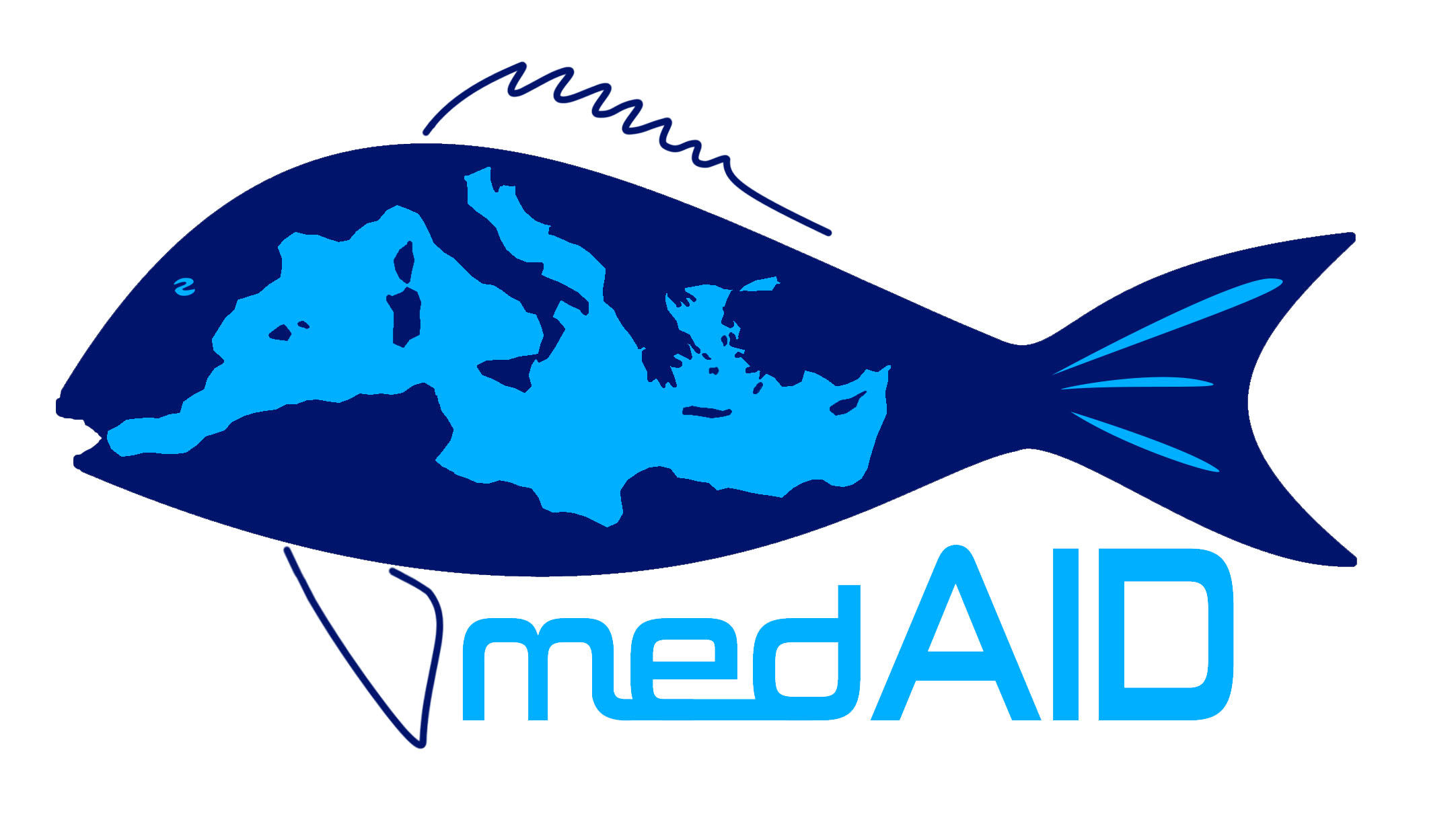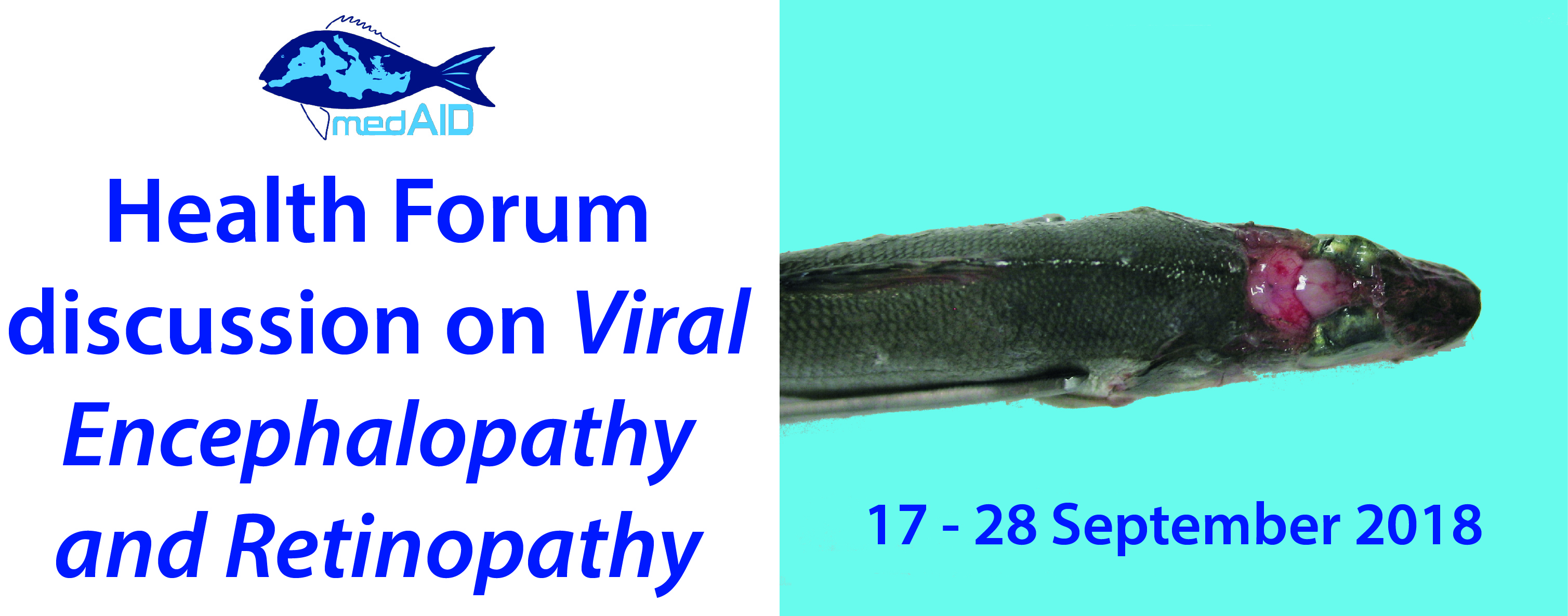Dates: 17-28 September 2018
Forum coordinator: Dr. Snježana Zrnčić, HVI. Zagreb, Croatia.
Discussion moderators:
Dr. Anna Toffan, IZSV, OIE Reference Laboratory for VER, Italy
Dr. Alain le Breton, VETEAU, France
Niccoló Vendramin, PhD student/Veterinarian, DTU-Aqua, Denmark
The discussion on Betanodavirus is the second topic addressed by the MedAID Health Forum, which is conceived as a platform to gather field diagnosticians, laboratories, relevant authorities in charge of disease management in the Mediterranean mariculture and other stakeholders.
Betanodavirus causes a disease known as Viral Encephalopathy and Retinopathy (VER), also known as Viral Nervous Necrosis (VNN). Since its first description during the early nineties, the disease is now endemic in the Mediterranean Sea and it is considered the most important viral disease affecting farmed and wild marine species. Betanodaviruses have an extended host range, including sea bass, groupers, flatfish and drums but the species that suffer more from this disease in the Mediterranean is undoubtedly the European sea bass (Dicentrarchus labrax).
Genetically different betanodaviruses (at present 4 parental genotypes and 2 reassortant genotypes have been described) show diverse phenotypes and epidemiological features (antigenic properties, replication temperature, host tropism, virulence). This viral plasticity increases difficulties in diagnosis and controlling the disease. As an example, recently sea bream (Sparus aurata), a species previously considered resistant to the disease, showed to be susceptible during the larval stage to VER caused by RGNNV/SJNNV genotype. The pathogenesis as well as the epidemiology of this virus in this species is largely unknown.
VNN/VER affected fish show typical nervous signs (corkscrew swimming, loss of buoyancy, blindness) with different levels of mortality depending on the virus, the affected fish species, the age, and other environmental factors. The virus is transmitted both horizontally and vertically. The extreme resistance of the betanodavirus in the marine water as well as the existence of “healthy carrier” among survivors play an important role for the spreading of the disease. As for the other viral disease, no treatment is available. The best way to fight the disease is the prevention by implementing effective biosecurity plan and vaccinating fish (if a vaccine is available). The limited availability of vaccines against VER is currently a big concern. Promising results are coming from genetic selection of VER resistant fish programs.
To know more more about the Viral Encephalopathy and Retinopathy disease you can read here in our blog the Mini-review written by Dr. Anna Toffan.
To know more about Prophylactic measures against Viral Encephalopathy and Retinopathy (VER) and vaccine development you can read here in our blog the Mini-review written by Sofie Barsøe.
1. Objectives of the Betanodavirus discussion
• To exchange the recent scientific data of a practical implication, with the health experts dealing with the problem caused by betanodaviruses in farmed fish
• To help farmer understanding diagnostic results and prognostic values of laboratory results
• To help farmers implementing their biosecurity level
• To share “tips and tricks” of farmers about how to deal with VER positive fish batch from one area to help farmers in other areas with the same problem
2. Process proposed to focus the discussion
The health farm experts are encouraged to share their valuable practical knowledge; the current prevention strategy should be profoundly evaluated and analyzed
3. The topics that should be discussed
• Epidemiology of VER in seabass and seabream
• Biosecurity rules
• Good aquaculture practices in prevention of VNN/VER infection
• Disinfection methods
• Diagnostic methods choice and use

Forum coordinator

Discussion moderator

Discussion moderator

Discussion moderator

